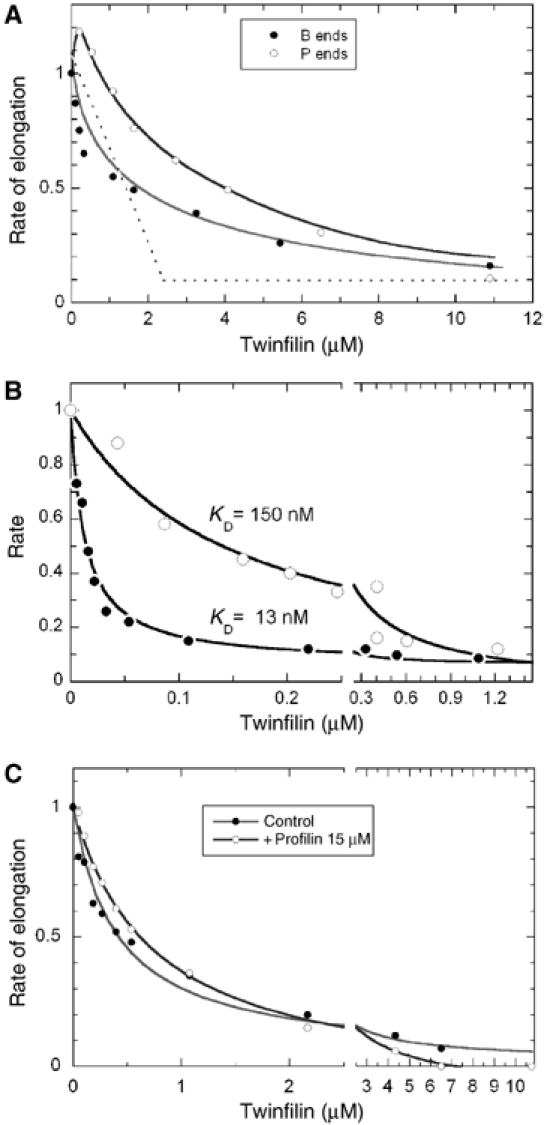Figure 2.

Twinfilin inhibits actin assembly with different mechanisms at barbed ends and pointed ends. (A) Barbed end growth (closed circles) and pointed end growth (open circles) were initiated with 2.5 μM G-actin (10% pyrenyl-labeled) and twinfilin as indicated. The initial rates were normalized to the value of 1 measured in the absence of twinfilin. Note that the observed inhibition is stronger than expected within this model in a range of low twinfilin concentration: all data points are below the dotted line that represents sequestration expected if twinfilin bound G-actin with infinite affinity. The red line is consistent with barbed end capping by twinfilin with a value of KF of 0.2 μM and ATP-G-actin sequestration with a value of KT of 2 μM (Equation (4)). In contrast, the effect of twinfilin at pointed ends is accounted for by nucleation of new pointed ends and sequestration of actin in a 1:1 complex with KT=2–3 μM. (B) Twinfilin inhibits dilution-induced depolymerization of F-ADP-actin (closed circles) or F-AMPPNP-actin (open circles) at barbed ends with high affinity. Filaments (2.5 μM F-actin, 75% pyrenyl-labeled) were diluted 80-fold in polymerization buffer containing twinfilin at the indicated concentrations. The line is the theoretical curve used to fit the data with a model in which twinfilin caps ADP-bound barbed ends (Equation (3)) with KF=13 nM, and AMPPNP-bound barbed ends with KF=150 nM. (C) Barbed end capping by twinfilin inhibits barbed end growth from profilin-actin. Barbed end growth was initiated by spectrin-actin seeds (conditions as in Figure 1a) in the presence of 3 μM G-actin with (open circles) or without (closed circles) 15 μM profilin and twinfilin as indicated. The curve fitting data in the absence of profilin is calculated according to Equation (4) assuming that twinfilin caps barbed ends (KF=0.2 μM) and sequesters ATP-G-actin (KT=4 μM). The curve fitting data in the presence of profilin is calculated according to Equation (6) assuming that twinfilin only caps barbed ends (KF=0.6 μM).
